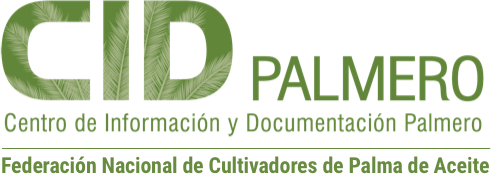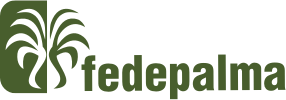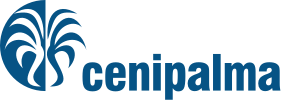| dc.creator | Ávila Méndez, Kelly | |
| dc.creator | Pico Ortiz, Gilberto | |
| dc.creator | Ávila Díaz-Granados, Rodrigo | |
| dc.creator | Sarria Villa, Greicy Andrea | |
| dc.creator | Romero Angulo, Hernán Mauricio | |
| dc.date | 2018-03-30 | |
| dc.date.accessioned | 2020-07-25T11:21:40Z | |
| dc.date.available | 2020-07-25T11:21:40Z | |
| dc.identifier | https://publicaciones.fedepalma.org/index.php/palmas/article/view/12404 | |
| dc.identifier.uri | http://repositorio.fedepalma.org/handle/123456789/140761 | |
| dc.description | Este trabajo investigó el modelo de interacción planta-patógeno mediante discos de hojas de clones de palma de aceite inoculados en condiciones ex situ con un aislamiento de Phytophthora palmivora. Las inoculaciones se realizaron en condiciones controladas en cámara de crecimiento. En total, seis diferentes ortets fueron evaluados en seis tiempos de infección (2, 4, 6, 12, 24 y 48 horas postinfección, o hpi). Se determinó la presencia de estructuras de patogenicidad de P. palmivora como quiste, apresorio y tubos germinativos. Los quistes fueron identificados principalmente a las 2, 4 y 6 hpi. A partir de las 48 hpi no hubo presencia de zoosporas enquistadas para ningún ortet evaluado. En cuanto a los apresorios, estos se empezaron a desarrollar a las 4 horas de realizada la inoculación (siendo las 12 y 24 hpi los tiempos de mayor registro de estas estructuras). Por su parte, los tubos germinativos se encontraron a partir de las 48 hpi únicamente. Finalmente, se pudo establecer que el patógeno logra colonizar tejidos de foliolo no lignificados de clones de palma. Además, se encontró una relación entre el número de estructuras del patógeno con el comportamiento del cultivar de la palma donor (ramet). | es-ES |
| dc.description | Plant-pathogen model interaction was studied using leaf disks of oil palm clones inoculated ex situ with a Phytophthora palmivora isolate. The inoculation process was performed under growth chamber conditions. Six ortets were evaluated at six post-inoculation times (2, 4, 6, 12, 24 y 48 hours post infection, or hpi). Pathogen’s infection structures as cyst, apressorium and germinative tubes were found. Cysts were identified mainly at 2, 4 and 6 hpi. After 48 hpi there were not any cysts for the evaluated ortets. The apresoria started to developat 4 hpi, with the highest presence of these structures at 12 and 24 hpi. Germinative tubes were found only after 48 hpi. Therefore, it was established that the pathogen can colonize no-lignified tissue of oil palm clones. Finally, we found a relation between the pathogen’s structures number and the response of the ortet related to its susceptibility and resistance response. Thus, it was found that the susceptible cultivar showed the highest number of germinative tubes. | en-US |
| dc.format | application/pdf | |
| dc.language | spa | |
| dc.publisher | Fedepalma | es-ES |
| dc.relation | https://publicaciones.fedepalma.org/index.php/palmas/article/view/12404/12315 | |
| dc.rights | https://creativecommons.org/licenses/by-nc-nd/4.0 | es-ES |
| dc.source | Revista Palmas; Vol. 39 Núm. 1 (2018); 120-130 | es-ES |
| dc.source | 0121-2923 | |
| dc.title | Identificación de estructuras de infección de Phytophthora palmivora en hojas de clones de palma de aceite (Elaeis guineensis Jacq.) | es-ES |
| dc.title | Identification of infection structures of Phytophthora palmivora in leaves of oil palm clones (Elaeis guineensis Jacq.) | en-US |
| dc.type | info:eu-repo/semantics/article | |
| dc.type | info:eu-repo/semantics/publishedVersion | |


